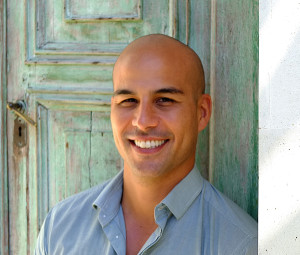Alumni Q&A / John Taylor MUP ’06
Hometown: London, England
Current City: Dhaka, Bangladesh
Current Position: International Project Manager, National Urban Poverty Reduction Programme (NUPRP), UNDP Bangladesh
Other Degrees: B.A. in Architecture, UC BerkeleyJohn Taylor MUP ’06
1. What was your work experience/background before coming to the GSD?
I graduated from the University of California, Berkeley with an architecture degree in 2000, though I studied planning too and was interested in pursuing it. I served in the Peace Corps in Honduras and then worked for UN-HABITAT in Ecuador and Brazil on slum upgrading projects.
2. Why did you decide to pursue planning as a career?
I was interested in international development work but with an urban focus. I wanted to translate the participatory aspects of my work in urban poor settlements in Brazil and Ecuador into social policies through inclusive community engagement and finding ways to democratize urban planning for all.
3. What made you decide to come to the GSD?
I already had some firsthand experience in international development through the Peace Corps and UN-HABITAT, but it was outside of a planning context. I wanted to learn more technical skills that I could use as an international development professional, and the GSD’s ability to bring policy and design together and provide skills training, while being grounded in the built environment, was really appealing to me. I also liked that the GSD is part of Harvard University, which of course has a lot to offer.
4. What areas in planning interest you the most?
The main thread that has run through my career is participatory planning. This has taken several forms, such as launching participatory mapping initiatives, designing tools to make information available to the public, developing processes to engage communities, and coming up with outreach strategies. All these efforts have sought to increase the interaction of people with the planning and design of their cities.
5. What are some of your favorite memories of the GSD?
In terms of interacting with my like-minded peers, I was part of Social Change and Activism (SOCA) in which we advocated for more diversity at the GSD and a more socially-oriented curriculum. It was an incredible group of students who continue to do impressive work to this day, and I believe we made some headway at the GSD too.
I also had a very inspirational experience doing post-Hurricane Katrina rebuilding work for a class with Professor Frederic Schwartz.
In addition, I was a TA for an urban participatory planning studio in Belo Horizonte, Brazil. I’m still in touch with many of my classmates from the studio who are still working on participatory planning and social issues in their own professional careers; we recently made a video for our professor about what that shared experience meant for us.
6. Can you summarize the path you have taken since graduation that has led to your current position and how the GSD prepared you for it?
After the GSD, I worked in Angola on participatory planning with a local NGO for two years. But I always wanted to work in my native Indonesia, so I moved to Surakarta, Central Java. There, I started a pilot community mapping project with a group of volunteers, and from this, we ended up turning it into a local NGO called Kota Kita. After running this organization for eight years, I moved to Bangladesh to work for UNDP.
One of my professors at the GSD stressed the importance of adopting an entrepreneurial mindset and the importance of being able to convince others that your work and skills are invaluable. For a planner, this is especially true.
7. What are some networking strategies you’ve found most useful?
I started from scratch in Indonesia, but it’s easier to network in places where you know professionals. In my first two months there, I probably had 50 informational interviews. Many of these kinds of discussions are dead ends, but some lead to great things. It doesn’t matter how you make the connections – most people will be happy to speak with you. If you believe in the process, informational interviews can help people know your skills and interests, from which something good will happen.
The GSD is a special place with great networks, but make sure to go beyond it as well. For example, don’t only try to connect with planners. The people who have opened doors for me have come from all sorts of disciplines, institutions, and universities.
8. What advice do you have for new planners?
There is almost nothing better you can take away from the GSD than a close partnership with a professor, as well as with your peers. I’ve had a lot of satisfaction seeking advice and connecting with my professors throughout my career, and their guidance has been invaluable.
After the GSD, if you can’t find a job offer that provides an opportunity to do something specific that you want, then sometimes starting something on your own can offer you a path. If you can adopt an entrepreneurial mindset and make things happen on your own, working on the issues that interest you most, you’ll gain a lot of experience. So, I encourage young planners to not give up on their ideals and interests – by following them through to the end you’ll develop a rewarding career for yourself.
